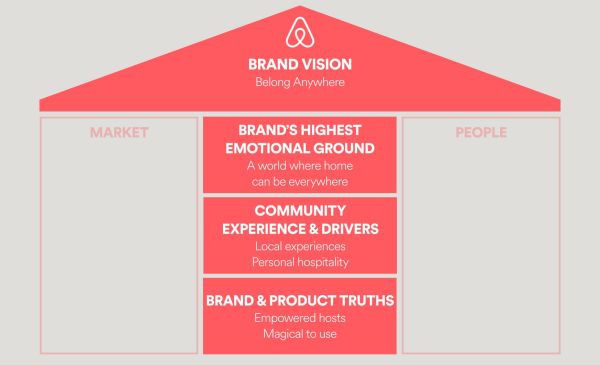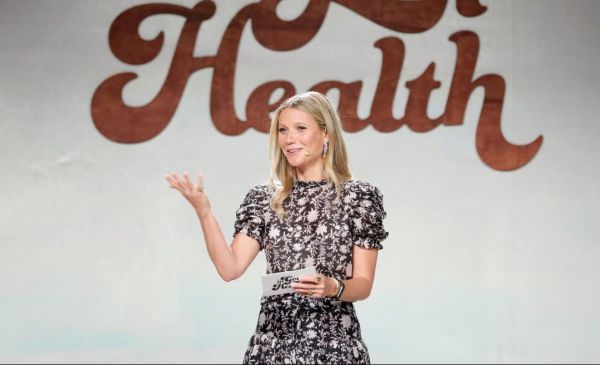
Brand vision is intention. It can be a single-minded intent, or a group of goals and objectives — typically no more than one, two or three.
Steve Jobs wanted this, “Put a ding in the universe.”
Henry Ford wanted to make cars that ordinary Americans could afford. (Consider that in Henry’s era, people were driving the equivalent of $200,000 Teslas while everyone else was riding a horse.)
Tesla Motor’s vision is to accelerate the world’s transition to sustainable energy.
And Elon Musk’s newest vision is to enable people to go “Anywhere on Earth in under one hour.”
It is sometimes hard to differentiate between a Vision and Mission Statement, in practice they are often conjoined, conflated and confused.
Think about yourself. It’s the difference between, I want to figure out how to take a year off and go to Bali (vision statement), versus I want to be nice to everyone at work, be more intentional and pay the rent on time (mission statement).
Your Mission Statement should be derived from your Vision, and should help your Vision become a possibility rather than an aspirational poster. So, maybe together all those things will help get you to Bali.
Patagonia’s Brand Vision is often voiced as, “environment conservation and restoration,” while their famous Mission Statement is, “Build the best product, cause no unnecessary harm, use business to inspire and implement solutions to the environmental crisis.”
Three specific to-do’s are mentioned and you can feel a spine running through the thing.
Neil Blumenthal of fashion eyewear company Warby Parker has noted the brand’s fledgling intention was to break into the world of “health and fashion.”
Warby Parker’s mission statement from 2015 reads, “Warby Parker was founded with a rebellious spirit and a lofty objective: to offer designer eyewear at a revolutionary price, while leading the way for socially conscious businesses.”
Brand Vision Defined
Simply, the Brand Vision says “What’s out there?,” the Mission Statement says “How” and/or in what manner. Fundamentally, there is a compelling tone of voice and personality embodied in both the Vision and Mission that attracts us.
Vision attracts our being at the deepest core, the level that exposes something raw, cellular and greater than our selves. It’s the reason why people get out of bed in the morning.
The Vision is a statement — an intention — about where the company is going.
Where will we be in six months? Six years? Why do we come to work in the morning?
Amazon is an example that experts frequently turn to as an example of Vision and Mission.
Amazon’s Vision “is to be earth’s most customer centric company; to build a place where people can come to find and discover anything they might want to buy online.”
In his famous 1997 Letter To Shareholders, Jeff Bezos made three Mission-centric declarations that outlined the company Mission. These statements have held through time and are pointed to and serve as totems in strategy conversations around the world.
“This is Day 1 for the Internet.”
“We believe that a fundamental measure of our success will be the shareholder value we create over the long term…Because of our emphasis on the long term, we may make decisions and weigh tradeoffs differently than some companies.”
“We will continue to focus relentlessly on our customers.”
Twenty years later, Amazon is ranked #1 in the American Customer Satisfaction Index and Jeff Bezos is the richest man in the world.
If you want to see how that vision has evolved, read here.
Zappo’s vision, by comparison, seems pragmatic and functional. “One day, 30% of all retail transactions in the US will be online. People will buy from the company with the best service and the best selection. Zappos.com will be that online store.”
Apple’s vision, according to current CEO Tim Cook, is “We believe that we are on the face of the earth to make great products and that’s not changing. We are constantly focusing on innovating. We believe in the simple not the complex. We believe that we need to own and control the primary technologies behind the products that we make, and participate only in markets where we can make a significant contribution. We believe in saying no to thousands of projects, so that we can really focus on the few that are truly important and meaningful to us. We believe in deep collaboration and cross-pollination of our groups, which allow us to innovate in a way that others cannot. And frankly, we don’t settle for anything less than excellence in every group in the company, and we have the self- honesty to admit when we’re wrong and the courage to change. And I think regardless of who is in what job those values are so embedded in this company that Apple will do extremely well.”
Much different than, “I want to put a ding in the universe,” right? This reads more like a mission statement and underlines the difference between a visionary entrepreneur and a manager trying to execute someone else’s vision. Even a good manager.
Google’s mission is: To organize the world’s information and make it universally accessible and useful.
The Walt Disney Company’s corporate vision is “to be one of the world’s leading producers and providers of entertainment and information.”
Nike Inc.’s official mission statement is “to bring inspiration and innovation to every athlete in the world.”
When pushed to create a mission statement by co-workers, Blue Bottle Coffee’s founder James Freeman expressed his vision in three words: “Deliciousness, hospitality and sustainability.”
Netflix’s quest is “We promise our customers stellar service, our suppliers a valuable partner, our investors the prospects of sustained profitable growth, and our employees the allure of huge impact.”
Shapchat’s mother ship Snap Inc. says it’s a camera company that believes “reinventing the camera represents the greatest opportunity to improve the way people live and communicate.”
Marriott International does not have a mission statement; rather, they stress their Vision, which is “To be the world’s favorite travel company.”

Airbnb’s mission, which reads like it might have been conceived after too much Burning Man reads, “To live in this world where one day you can feel like you’re home anywhere and not in a home, but truly home, where you belong. To live in this world where you can be home, you have to provide hospitality and hosts provide hospitality. Airbnb is a hospitality company.”
Notice that the words “transformational,” “transparent,” “empower,” “genuine,” “experience,” are not used anywhere in the Vision statements above. If these words exist in your statement, you’re probably doing work that’s already been done.
“The Vision is what we want to be,” asserts brand and strategy expert Erich Joachimsthaler, CEO of Vivaldi. “A brand vision should be an aspiration. Not what you stand for right now, but what you aspire to create. A brand vision has a lot more depth because it draws on the organization, personality, product features, it draws on not just what the customer buys but is more future driven and future aspiration.”
Joachimsthaler agrees that the difference between Brand Vision and Brand Mission is an area of modern confusement that has extinguished forests of white boards, oversized Post-It® Notes and dry erase markers.
When Joachimsthaler and fellow brandsmith David Aaker were business partners in the 1980s (they worked together for over 25 years), these concepts were rough, raw and often misused. “What some people do not realize,” says Joachimsthaler, “sometimes the brand strategy becomes the business strategy. Brand vision is the face of the business strategy. Brand vision becomes the back page for your business strategy.”
Vision fills the empty meaningless hole in our universe and makes it meaningful. Some assembly is required.
When you understand the concept of brand vision properly, says Joachimsthaler, it is not only understanding the operational state of your business — but Vision can become your superpower to rethink an entire industry.
Companies like Netflix, Apple smartphones, Airbnb came not from a business strategy, but from an entirely new perception, a left-field cracked-egg vision of the world.

Gwyneth Paltrow’s enterprise Goop espouses a reverence for a new kind of expert, a kind of visionary who rejects modernity (in Goop-speak, that’s “Western medicine”) in favor of a romanticized vision of natural, pre-modern (i.e. “Eastern”) practices.
Listen.
“We believe Goop believes that the little things count,” Goop declares on their website, “that good food is the foundation of love and wellness, that the mind/body/spirit is inextricably linked and we have more control over how we express our health than we currently understand, that it’s better to buy fewer things that are better.”
More.
Here’s an editorial statement from someone else that has not been condensed into a one-liner, but is a fusion that illustrates how Vision and Mission exert themselves and ultimately become a part of everyday activations and conversation.
It’s from Taylor Stitch, a purposeful clothing company in San Francisco. Taylor Stitch asks users to vote for the products that mean something to them (and fund them) before a single garment is made. It goes like this:
“Before we bring any of our products to life, we always like to know what our community thinks,” they write in a recent email burst. “In an effort to make the clothing industry better from the way we source, sew, and sell, we use fabric voting to limit over-producing products that might eventually end up in landfill. Ultimately, our goal is only to make products that will be loved by you, the wearer. It’s one effort we take to build for the long haul responsibly.”
The long haul.
Vision is built for the long haul, because you can’t really build for that journey unless you have a vision of what that thing is that you’re building for.
A better Self. Better Purpose. A better person, place or thing.
At least, that’s the Vision.
Contributed to Branding Strategy Insider by: Patrick Hanlon, Author of Primal Branding
The Blake Project Can Help: Please email us for more about our purpose, mission, vision and values and brand culture workshops.
Branding Strategy Insider is a service of The Blake Project: A strategic brand consultancy specializing in Brand Research, Brand Strategy, Brand Growth and Brand Education
FREE Publications And Resources For Marketers
No comments:
Post a Comment